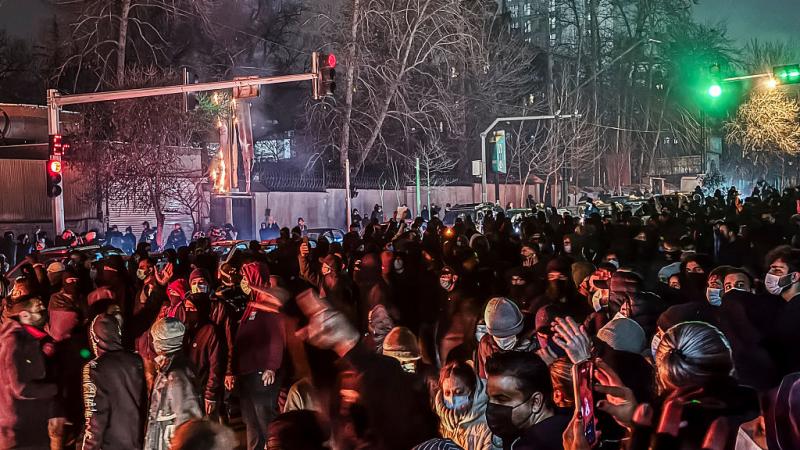Keeping Safe with Coronavirus: A Pandemic Q&A
Guidance from the CDC
Q: What are the best ways to keep my family and myself from contracting the virus?
A: Self-isolate, and stay at home as much as possible practicing social distancing. Follow the rules of your community and states. Their directives are based upon statewide information from state health officials and regional information. https://www.cdc.gov/coronavirus/2019-ncov/prevent-getting-sick/prevention.html
Know which groups are at high risk even though the COVID-19 is very contagious.
Based on what we know now, those at high-risk for severe illness from COVID-19 are:
- People who live in a nursing home or long-term care facility
- People 65 and older
- Pregnant women
- Homeless population, because their immune systems may be at risk
People of all ages with underlying medical conditions, particularly if not well controlled, including:
- People with chronic lung disease or moderate to severe asthma
- People who have serious heart conditions
- People who are immunocompromised (Many conditions can cause a person to be immunocompromised, including cancer treatment, smoking, bone marrow or organ transplantation, immune deficiencies, poorly controlled HIV or AIDS, and prolonged use of corticosteroids and other immune weakening medications.)
- People with severe obesity (body mass index [BMI] of 40 or higher)
- People with diabetes
- People with chronic kidney disease undergoing dialysis
- People with liver disease
Overall recommendation according to the CDC is good hygiene — wash your hands with soap and water for at least 20 seconds after sneezing, coughing, or being out and about. If no soap is available, use hand sanitizer with at least 60% alcohol content. The CDC also recommends avoiding close contact with other people.
- Avoid touching your face, eyes, nose, and mouth with unwashed hands.
- Wash your food after you purchase your groceries.
- Eat well, get your sleep, get into a routine, and do some type of exercise but not in large groups.
- To prevent other people from getting sick, the CDC recommends staying at home, practicing social distancing, covering your mouth when you cough or sneeze, and wearing a face mask out in public. However, you do not need to wear a face mask unless you are constantly in direct contact with someone who is ill. Also, be sure to clean and disinfect the surfaces in your home. A disinfection guide can be found here: https://www.cdc.gov/coronavirus/2019-ncov/prevent-getting-sick/cleaning-disinfection.html
- Disinfect your home — tables, doorknobs, light switches, countertops, handles, desks, computers, phones, keyboards, toilets, faucets, sinks, television screens. First clean, then disinfect.
- Do not use the same plates or utensils. Wash all after using by hand or in the dishwasher.
- Wash all clothes.
CDC basically recommends personal hygiene and space disinfection and cleanliness.
As COVID-19 spreads and more information is gathered and analyzed, the Centers for Disease Control (CDC) will update their recommendations, and they may change based upon an aggregate of information being fed into the CDC from doctors, scientists and researchers around the world.
Listen to a family medicine doctor on the front lines of the pandemic describe ways you can fight coronavirus:
Q: What are the symptoms that are warning signs someone might have contracted COVID-19?
A: The main symptoms of COVID-19 after 2-14 days of exposure are:
- Fever
- Sometimes a headache
- Cough
- Shortness of breath
- If you lose your sense of smell, tell your doctor. Some patients found to have COVID-19 have lost their sense of smell, but that alone will not define COVID-19. It may help the doctor to determine if you are a carrier.
- Vomiting and diarrhea has shown up in children
Not all who have mild symptoms need to be tested. Call your doctor for advice, and call your state or community health office about testing.
Emergency warnings signs for COVID-19 requiring you get medical attention immediately include, but are not limited to:
- Trouble breathing
- Persistent pain or pressure in the chest
- New confusion or inability to arouse
- Bluish lips or face
(https://www.cdc.gov/coronavirus/2019-ncov/symptoms-testing/symptoms.html)
Q: What should I do if I have these symptoms?
A: If you have mild symptoms, stay home and self-isolate at home, call your doctor, and avoid public transportation — subway, bus, taxi, Uber. The CDC recommends you seek medical attention if you have difficulty breathing, a recurring pain in the chest that won’t go away, pressure in the chest, confusion, or blue-tinged lips or face. Follow the care steps provided by your doctor, and maintain a distance of at least six feet from other people, or call 911. https://www.cdc.gov/coronavirus/2019-ncov/symptoms-testing/symptoms.html
Q: How long does the virus last in my system, and when can a patient with COVID be sure they are not giving the virus to someone else?
A: There are still a lot of unknowns about COVID-19. Best to err on the side of caution. CDC guidelines say that if you no longer have a fever, your symptoms have improved, and if it's been a week since your first symptoms appeared, you can discontinue self-isolation, but again, better to be cautious because someone you know may be contagious and asymptomatic. If you are being tested for COVID-19, you can discontinue self-isolation if you receive two negative tests in a row within 24 hours.
Q: What treatments work for mild symptoms?
A: There is no specific treatment for COVID-19. Do not self-administer. Call your doctor.
(https://www.cdc.gov/coronavirus/2019-ncov/if-you-are-sick/caring-for-yourself-at-home.html)
Q: What if the infection becomes severe?
A: Call your doctor or 911.
Q: How long is social distancing going to last, and does it work?
A: Social distancing is not a new concept to address epidemics or pandemics. Today, even states have different mandates on sheltering-in-place, otherwise staying at home unless for essentials like grocery or pharmacy shopping or medical appointments.
Historically, not only was social distancing a healthy strategy, but when not applied, it was devastating for some communities. During the 1918 pandemic, social distancing was used. When it was not used, as, for example, in Philadelphia where they held a parade attended by 200,000, the consequences were devastating. Alternatively, in St. Louis, where social distancing was encouraged, there were less deaths.
Today, in America, there is no current timeline that tells when social distancing will end, but we do know it varies in the U.S. currently. Check with your state mandates, and remember that governors have more information across your state and region.
Q: Should I wear a face mask in public, and does it provide protection?
A: The CDC suggests you should wear a face mask if you are sick and going out into public areas. If you are caring for someone else who is sick and they are not able to wear a mask, the CDC suggests you wear one.
Q: How long does the virus last in the air and on surfaces?
A: There are no definitive studies determining if COVID-19 is 100% airborne. The length of time the virus will linger on different surfaces varies. The best advice is to disinfect one’s home and practice astute personal hygiene.
Q: I've heard wild ranges of death estimates. What is the latest thinking of the government on how many Americans may die?
A: Dr. Anthony Fauci, director of the National Institute of Allergy and Infectious Diseases estimates as of late March 2020 that anywhere from 100,000-200,000 may die from COVID-19.
The Facts Inside Our Reporter's Notebook
Links
- https://www.cdc.gov/coronavirus/2019-ncov/prevent-getting-sick/prevention.html
- https://www.cdc.gov/coronavirus/2019-ncov/prevent-getting-sick/cleaning-disinfection.html
- https://www.cdc.gov/coronavirus/2019-ncov/symptoms-testing/symptoms.html
- https://www.cdc.gov/coronavirus/2019-ncov/symptoms-testing/symptoms.html
- https://www.cdc.gov/coronavirus/2019-ncov/if-you-are-sick/caring-for-yourself-at-home.html
















